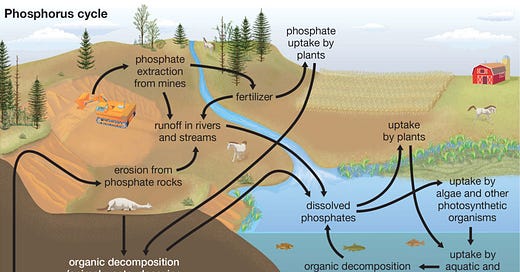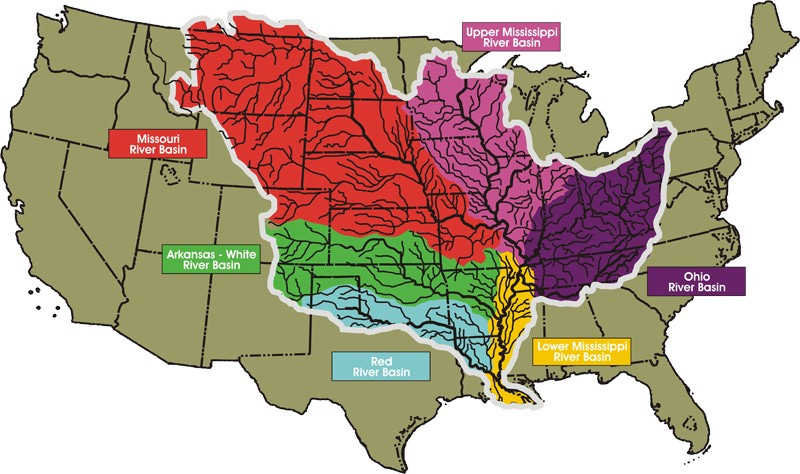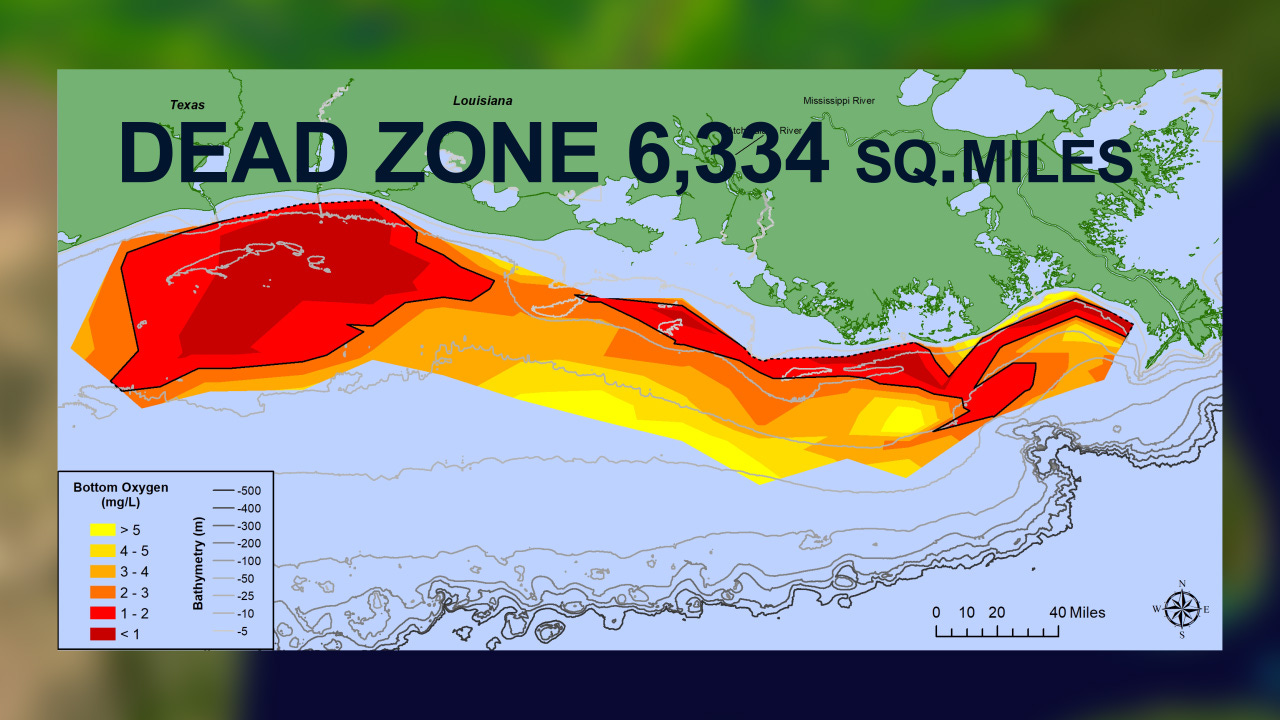Dead zones, eutrophication, Henry's Law and climate change.
Is climate change responsible for fish kills like that observed in Quintana Beach, TX, recently?
Agricultural runoff and our waterways…
Agricultural runoff is the process by which water, carrying substances like fertilizers, pesticides, and soil sediments, flows from agricultural lands into nearby water bodies such as oceans, rivers, streams, lakes, and groundwater. This runoff occurs when rainfall or irrigation water moves over the land's surface, picking up these substances and transporting them into waterways. Agricultural runoff can have detrimental effects on water quality and the health of ecosystems.
The primary concern related to agricultural runoff is nutrient pollution. Fertilizers used in agriculture contain nitrogen and phosphorus, which are essential for crop growth. However, when excess nutrients enter water bodies through runoff, they can cause eutrophication, an overgrowth of algae and aquatic plants. This excessive growth depletes oxygen levels in the water, resulting in "dead zones" where aquatic life cannot survive.
Pesticides, which are used to control pests, diseases, and weeds in agriculture, can also be carried by runoff into waterways. These chemicals can harm aquatic organisms, disrupt ecosystems, and potentially affect human health. Moreover, erosion caused by agricultural practices can lead to the loss of soil sediments, which are carried away by runoff. Sedimentation can negatively impact water quality, light penetration, and aquatic habitats, while also affecting water infrastructure.
What is eutrophication?
Eutrophication is a natural process that occurs when excess nutrients, primarily nitrogen, and phosphorus, enter a body of water, leading to an overgrowth of algae and other aquatic plants.
Eutrophication typically occurs through two main pathways:
Point Source Pollution: This refers to the direct release of nutrients into water bodies from specific, identifiable sources such as wastewater treatment plants or industrial discharges. These sources can introduce high concentrations of nutrients, accelerating eutrophication in localized areas.
Non-Point Source Pollution: This is the more common pathway of eutrophication and involves the indirect release of nutrients from diffuse sources. Agricultural runoff, as mentioned earlier, is a significant contributor to non-point source pollution. When fertilizers and manure from agricultural lands are washed away by runoff, they enter waterways and contribute to the nutrient load. Additionally, urban runoff, sewage overflows, and atmospheric deposition can also contribute to non-point source pollution.
Once these nutrients enter the water, they act as a fertilizer for algae and aquatic plants, leading to their rapid growth. This excess growth forms what is known as an algal bloom. Algae can reproduce quickly and cover large areas of the water surface, blocking sunlight from reaching the deeper layers. As a result, submerged aquatic plants, such as seagrasses, are deprived of light and eventually die off.
When the algae and aquatic plants die, they sink to the bottom of the water body. Bacteria and other microorganisms decompose the dead organic matter, consuming oxygen in the process. This consumption of oxygen leads to reduced oxygen levels in the water, creating "dead zones" or hypoxic conditions where aquatic organisms struggle to survive. Fish and other organisms that rely on oxygen-rich water may either die or be forced to leave the affected area.
The Mississippi River ‘dead zone’…
The dead zone associated with the Mississippi River is one of the most well-known and significant dead zones in the world. It forms in the Gulf of Mexico, particularly in the area near the river's mouth, and depending on currents can stretch all the way to Quintana Beach, TX. The dead zone, also referred to as the hypoxic zone, is an area of low oxygen levels that cannot support most marine life.
The formation of the dead zone in the Gulf of Mexico is primarily attributed to nutrient pollution from agricultural runoff and other human activities in the Mississippi River watershed. The watershed covers a vast area, spanning 31 U.S. states and two Canadian provinces, and it drains into the Gulf of Mexico. This extensive drainage basin collects nutrients, mainly nitrogen and phosphorus, from fertilizers, animal manure, and urban runoff, among other sources.
The dead zone in the Gulf of Mexico has severe implications for commercial and recreational fisheries, as well as the overall health of the marine ecosystem. The loss of oxygen-intolerant species and reduced biodiversity can disrupt the food chain and impact the economy and livelihoods of communities dependent on fisheries in the region.
Efforts to address the dead zone include implementing nutrient reduction strategies within the Mississippi River watershed. This involves promoting best management practices in agriculture, such as precision nutrient application, cover cropping, and buffer zones, to minimize nutrient runoff. Additionally, improving wastewater treatment systems, managing urban runoff, and raising awareness about the impacts of nutrient pollution are crucial components of reducing the size and severity of the dead zone.
Collaborative efforts involving government agencies, farmers, scientists, and stakeholders are ongoing to mitigate the dead zone's impacts and restore a healthier and more balanced ecosystem in the Gulf of Mexico.
Relationship to climate change…
Keep reading with a 7-day free trial
Subscribe to Irrational Fear to keep reading this post and get 7 days of free access to the full post archives.






